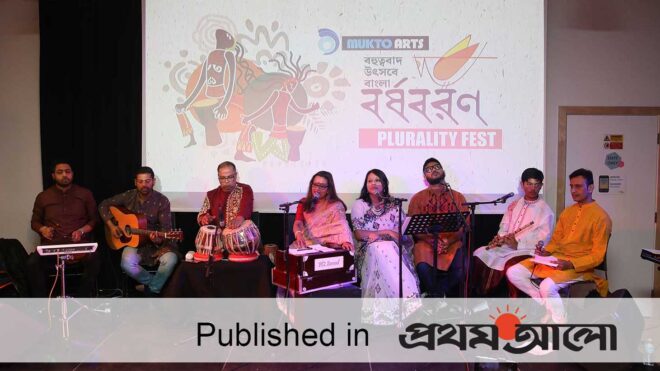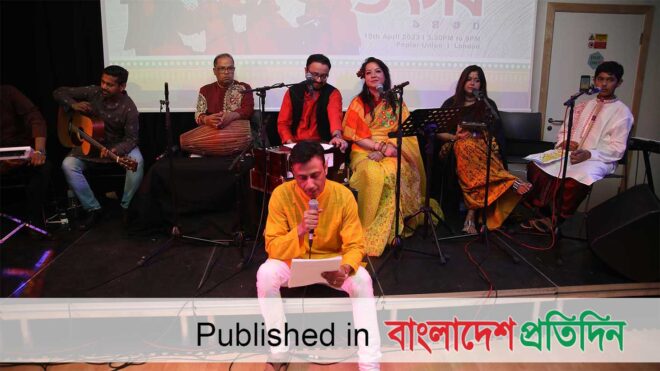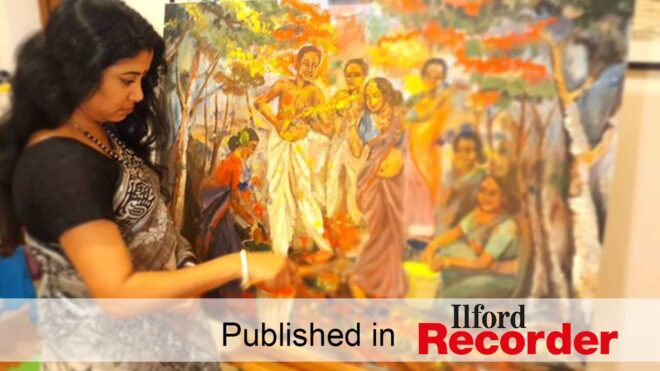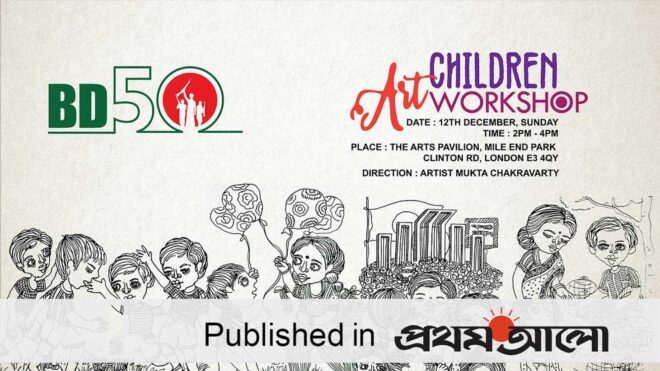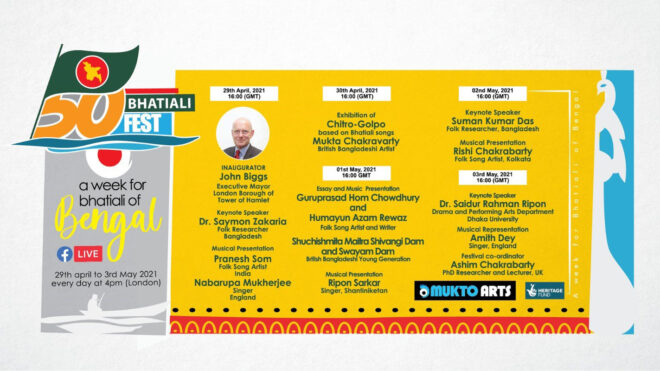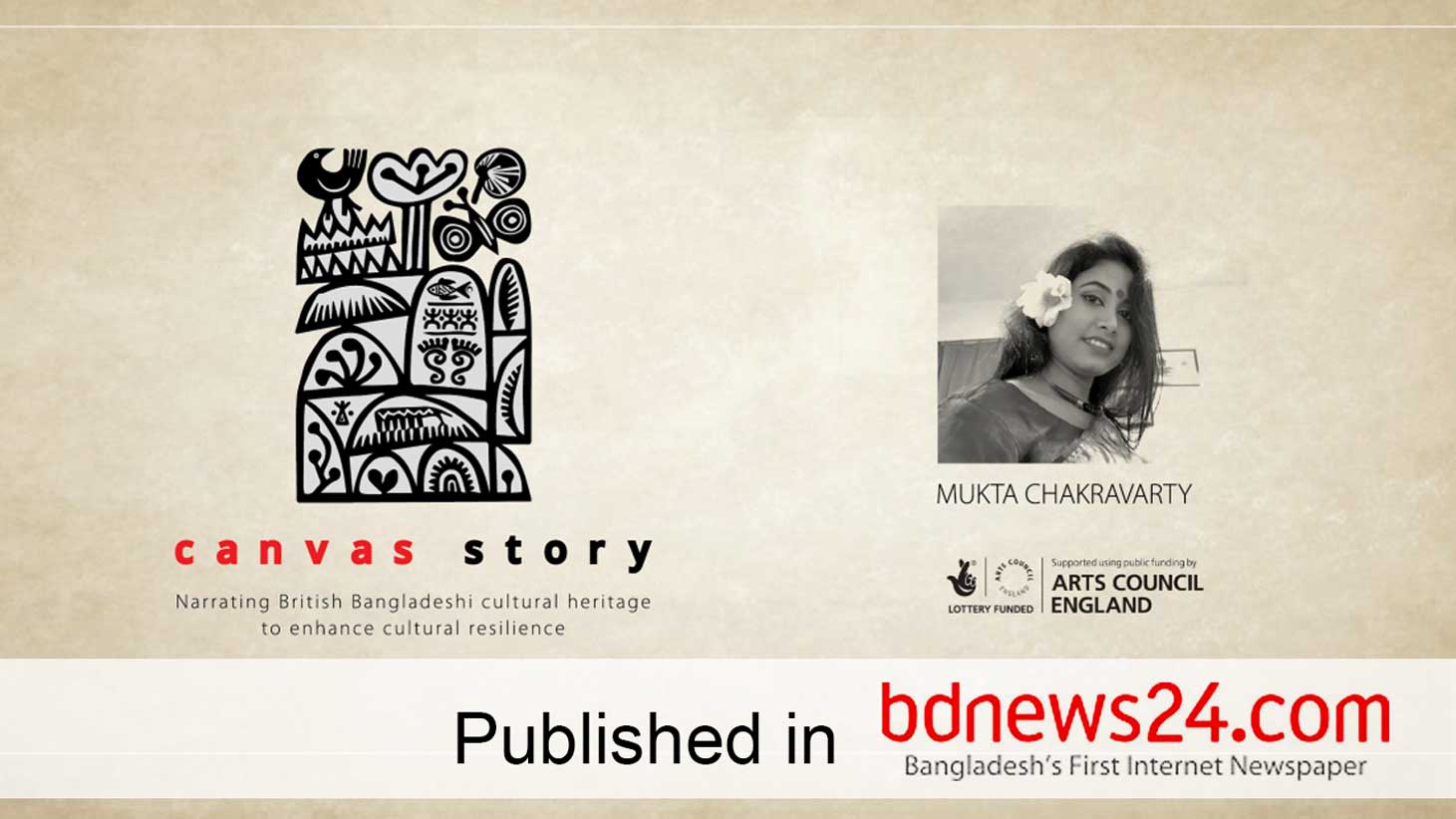
In essence, one’s culture, traditions and language are the foundations on which their identity is built. It is, therefore, imperative to preserve, and promulgate this cultural heritage in order to prevent an identity crisis within a community, particularly one which is disconnected from its roots.
And it is no secret that in spite of its diverse culture and history, Bangladesh is known for doing precious little to project and promote its rich heritage among the young British-Bangladeshis, much less mainstream British society.
To that end, British-Bangladeshi painter Mukta Chakravarty has embarked on a solo art project to integrate Bangladesh’s rich cultural heritage, dating back thousands of years, into the mainstream of Britain’s art scene.
In collaboration with the Arts Council of England and the National Lottery, she has launched a six-month-long project, titled ‘Canvas Story: Narrating British Bangladeshi cultural heritage to enhance cultural resilience’, in London.
The project aims to exhibit the rich Bangladeshi cultural heritage to a wider audience while creating a cultural resilience among the British Bangladeshi diaspora.
It focuses on three aspects of British-Bangladeshi cultural heritage, namely ‘Nouka Baich’ (boat race), Manosamangol (a medieval Bengali epic) and ‘Dol Utsab’ (festival of colours).
On the contents of the project, Chakravarty said the three topics are a celebration of Bangladesh’s enduring culture and traditions.
After researching on the subject matters, the artist incorporated its key elements into three paintings and wrote scripts for three short films to illustrate her work in an audio-visual format.
These will connect fine art, music and poetry to showcase the substance of Bangladeshi cultural heritage.
Additionally, researchers, academics and local public representatives, well-versed on the matter, will participate in six online seminars.
Each seminar will highlight the importance of cultural heritage in strengthening national and ethnic identity.
The three short films are set to premiere on the artist’s own social media handle, Mouni Mukta, on Nov 29, 2020, Jan 10 and March 8, 2021.
These will subsequently be archived on the website of diaspora organisation Mukto Arts.
Discussions are also being held to preserve the work on the archives of the British Library and the School of Oriental and African Studies (SOAS) for posterity.
Asked why she chose to focus on British Bangladeshi cultural heritage, Chakravarty said she has long wanted to work on Bangladesh’s culture.
“Everyone will know that our culture doesn’t derive from the Mughals or the British. We have the Dol Utsav which dates back more than five thousand years, the 750-year-old Manosamangol-Kavya as well the Nouka Baich that goes back a few thousand years.”
At the same time, the tunes and melodies of the past continue to leave a lasting impact even today but many customs and cultural practices are eroding due to neglect, she added.
As a result, many young people of Bengali heritage, including those born and raised in Britain, are losing a sense of their cultural identity. This makes it vital to celebrate and reinforce the thousand-year-old aesthetic cultural heritage of Bengal.
Chakravarty believes the project will contribute to the progression of building ‘one community living together’, while reflecting and shaping the values, beliefs and aspirations of Bengalis.
The project follows Chakravarty’s month-long solo exhibition of 40 paintings, titled ‘Triveni: The Rhythm of Water’, in November, 2019, which garnered a warm reception.
In June this year, she also launched a virtual painting exhibition with live art in collaboration with the Arts Council of England.

